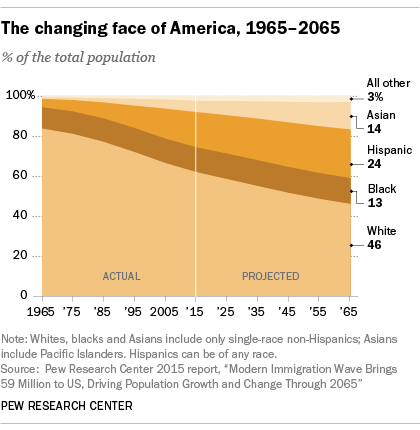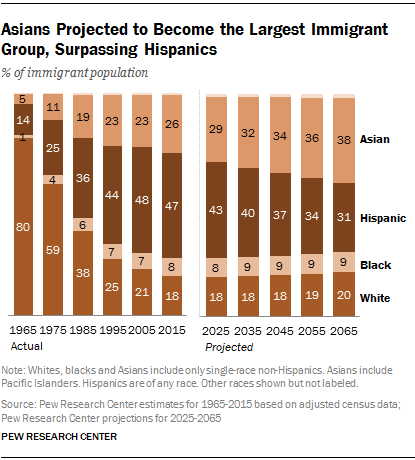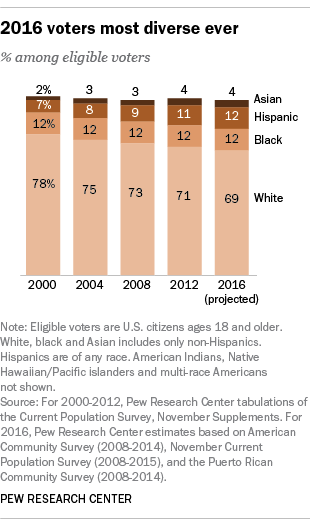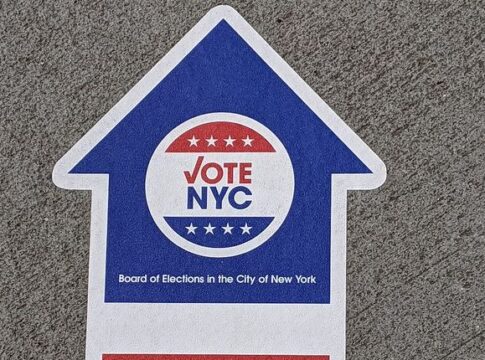By Ed Diokno
PSST! Don’t tell anyone, but the number of Asian Americans will surpass African Americans by the middle of this century.

At the root of the growth is immigration where immigrants from Asian countries has risen to the point of overtaking the immigration coming from Latin American countries, including Mexico.
So while this year’s presidential contenders focus their attention on whether or not to build a wall on our southern border – thankfully – no one is talking about building a wall along the West Coast, Alaska and Hawaii. Never mind that that feat is even less feasible than the wall on our border with Mexico. With the quality of some candidates’ rhetoric this political season, I’m surprised that someone like GOP frontrunner Donald Trump hasn’t proposed it.
That’s why I wouldn’t trumpet the growth of the Asian population too loudly (no pun intended), otherwise AAPIs might be more front and center in the Presidential race conversation.
RELATED: America’s challenge is learning to live with itself
LATEST STORIES
The same report shows that the U.S. will become more racially and ethnically diverse as the century marches on. The Latino American population will surge to make up 24 percent while the so-called white (Euro American) population will drop to 46 percent. The African American population will remain constant, around 13 to 14 percent up to 2065.

No race or ethnic group will make up the majority of the country by 2055. Much of this change has been (and will be) driven by immigration. Nearly 59 million immigrants have arrived in the U.S. in the past 50 years, mostly from Latin America and Asia.
American attitudes about immigration and diversity are supportive of these changes for the most part. More Americans say immigrants strengthen the country than say they burden it, and most say the U.S.’s increasing ethnic diversity makes it a better place to live.
In a reversal of one of the largest mass migrations in modern history, net migration flows from Mexico to the U.S. turned negative between 2009 and 2014, as more Mexicans went home than arrived in the U.S. And after rising steadily since 1990, the unauthorized immigrant population has leveled off in recent years, falling to 11.3 million in 2014 from a high of 12.2 million in 2007.
The implications of the racial shift are enormous although they will not have much impact in this year’s political free-for-all even though the 2016 electorate will be the most diverse in U.S. history due to strong growth among Latino American eligible voters, particularly U.S.-born youth.
There are also wide gaps opening up between the generations on many social and political issues, most evident in the Democratic contest featuring the generally youthful supporters of Bernie Sanders and the older generations leaning towards Hillary Clinton. Young adults tend to hold liberal views on many political and social issues, though they are also less likely to identify with either political party: 50 percent call themselves political independents, who may be the deciding factor in November during the general elections.
READ the full report here.
In order to take full advantage the increased numbers, AAPI will have to do a better job in registering to vote. As the graphs show in 2015, although Euro Americans made up only 60 percent of the U.S. population, they made up 69 percent of voters.
The demographic trend could create a domino effect of changes in other fields: more AAPI politicians; an increase of marketing of products directed at the AAPI consumers; schools might teach more Asian languages and Asian American history; more of a presence in motion pictures and TV; and maybe even, the standard of beauty will change.
RELATED: The American story – immigration, innovation, opportunity
Hopefully, by 2065, a couple of generations will have passed and today’s immigrants’ children and their children’s children will have time to register as voters.
One of the unfortunate possibilities of becoming more visible is that AAPIs will become more of a target of hate mongers. As a community, Asian Americans will have to gird themselves for this likely outcome and prepare themselves to take a more prominent role in this century when the face of America will no longer be the blond, blue-eyed Euro American.
(Ed Diokno writes a blog :Views From The Edge: news and analysis from an Asian American perspective.)
(AsAmNews is an all-volunteer effort of dedicated staff and interns. You can show your support by liking our Facebook page at www.facebook.com/asamnews, following us on Twitter and sharing our stories).









